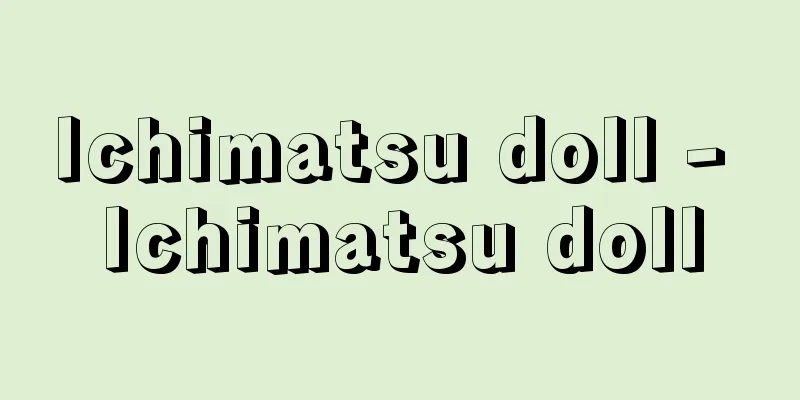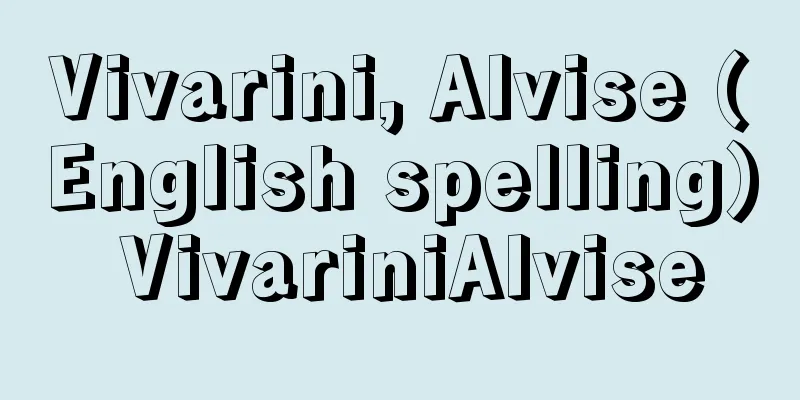Kenji Miyazawa

|
Poet, children's story writer, agricultural chemist. Rural leader, religious thinker. Born on August 27, 1896, in Hanamaki-cho, Hienuki-gun, Iwate Prefecture (now Hanamaki City), as the eldest son of his father Masajiro (1874-1957, pawnbroker and second-hand clothing dealer) and mother Ichi (1877-1963), he grew up surrounded by a strong Buddhist faith inherited from his ancestors. From his childhood, he was passionate about collecting plants and especially minerals, and was nicknamed "Sekiko Ken-san." He entered Morioka Junior High School, and began composing tanka poems in his second year. Gradually, he neglected his studies, and became absorbed in reading books on mountains and fields, philosophy, and religion. In his fifth year, he was expelled from the dormitory for participating in a movement to expel the dormitory supervisor, and his grades began to decline rapidly after that, but this was also influenced by his aversion to taking over the family business. In 1914 (Taisho 3), he graduated from Morioka Middle School and was hospitalized for surgery for hypertrophic rhinitis. He fell in love with a nurse, but this first love never came to fruition. That autumn, he was deeply moved when he read Shimaji Taito's Chinese-Japanese Comparison of the Lotus Sutra (Myoho Rengekyo), and with his father's permission to continue his education, he turned his attention to studying for the entrance exams, and in 1915 entered Morioka Higher Agricultural and Forestry School, Department of Agriculture, as the top of his class. During his time at the high school, he studied hard with Katayama Masao's Chemistry Treatise as his constant companion, while also breaking new ground in tanka poetry, publishing a series of tanka poems and poetic prose in the school's coterie magazine Azaria and the Alumni Association Newsletter. In 1918, he graduated with a thesis entitled "The Value of Inorganic Components in Humus to Plants." He then worked as a research student on soil properties in Hienuki County, but was afflicted with pleurisy during this time. That summer, he began writing children's stories, such as "The Spider, the Slug and the Raccoon Dog" and "The Twin Stars." In 1920, he joined Tanaka Chigaku's Kokuchukai, and tried to convert to Christianity, but was refused. In January of the following year, 1921, he suddenly went to Tokyo without permission, stayed in a boarding house in Hongo Kikusaka-cho, and worked as a copyist while participating in missionary activities, and wrote many children's stories at night. However, in the summer, he returned home after hearing that his younger sister was ill, and in December he became a teacher at Hienuki Agricultural School (later Hanamaki Agricultural School), where he taught for over four years. During this time, he began composing colloquial poetry, and publishing his poems and children's stories in local newspapers and coterie magazines. In 1924, he published a collection of poems called "Spring and Ashura" and a collection of children's stories called "The Restaurant of Many Orders." He also led agricultural school students in staging plays he had written himself, such as "The Hunger Camp," almost every year. In March 1926, he retired from the agricultural school, lived alone and cooked his own meals in Shimoneko Sakura, cleared land, and gathered young people to form the Rasu Landmen's Association, where he lectured on agricultural chemistry and peasant art, and began cultural activities such as listening to records and practicing in ensembles. However, he came under the watchful eye of the authorities, and his activities were thwarted due to his own illness and other factors. Around 1931 (Showa 6), he recovered somewhat from his illness and became an engineer at the Tohoku Crushed Stone Plant, where he worked hard to promote and sell lime, but the strain took its toll on him and he fell ill again, and he died on September 21, 1933. In his later years, he was absorbed in revising, revising and rewriting his old poems and fairy tales, and produced and reprinted many literary poems. Just one year after his death, the three-volume "Complete Works of Miyazawa Kenji" (1934-1935, Bunpo-do) was published, and thanks to the efforts of his younger brother Seiroku (1904-2001), poets Kusano Shinpei and Takamura Kotaro, Miyazawa Kenji's person and works quickly became known to the world. His fairy tales include "Kaze no Matasaburo" and "Night on the Galactic Railroad," and his poems include "Eiketsu no Asa" and his memo "Ame ni mo Makezu." There is a Miyazawa Kenji Memorial Museum in Hanamaki City. [Taijiro Amasawa, June 19, 2018] "The Revised Complete Works of Miyazawa Kenji," 14 volumes (1973-1977, Chikuma Shobo)" ▽ "Shincho Japanese Literature Album: Miyazawa Kenji" (1984, Shinchosha)" ▽ "The New Revised Complete Works of Miyazawa Kenji," 16 volumes and 1 supplementary volume (1995-2009, Chikuma Shobo)" ▽ "The Complete Works of Miyazawa Kenji," 10 volumes (Chikuma Bunko)" ▽ "Miyazawa Kenji by Nakamura Minoru (1972, Chikuma Shobo)" ▽ "Miyazawa Kenji and His Development" by Saito Bunichi (1977, Kokubunsha)" ▽ "Beyond Miyazawa Kenji" by Amazawa Taijiro (1977/Newly Revised and Enlarged Edition, 1987, Shichosha/Chikuma Gakugei Bunko)" ▽ "Miyazawa Kenji Essays, by Toshiro Ozawa, 3 volumes (1987, Yuseido Publishing)" "Miyazawa Kenji Essays, by Itsuo Onda, 3 volumes (1991, Tokyo Shoseki)" [References] | |Night | | |©Shogakukan Library "> Kenji Miyazawa Hanamaki City, Iwate Prefecture ©Iwate Prefecture Tourism Association Miyazawa Kenji Memorial Museum Source: Shogakukan Encyclopedia Nipponica About Encyclopedia Nipponica Information | Legend |
|
詩人、童話作家、農芸化学者。農村指導者、宗教思想家。明治29年8月27日岩手県稗貫(ひえぬき)郡花巻町(現、花巻市)に、父政次郎(まさじろう)(1874―1957。質・古着商)、母イチ(1877―1963)の長男として生まれ、父祖伝来の濃密な仏教信仰のなかで育った。少年時代から植物採集やとくに鉱物採集に熱中、「石コ賢さん」とよばれる。盛岡中学校に入学、2年のころから短歌制作を開始。しだいに学業等閑視、山野跋渉(ばっしょう)や、哲学書、宗教書を耽読(たんどく)するようになった。5年のとき寮監排斥運動に加担したとして退寮させられたころから急速に成績低下するが、これには家業を継ぐことへの嫌忌なども影響していた。1914年(大正3)盛岡中学を卒業、肥厚性鼻炎手術のため入院。看護婦に恋をするが、この初恋は実ることなく終わる。この秋、島地大等(しまじたいとう)編『漢和対照 妙法蓮華経(みょうほうれんげきょう)』を読んで激しく感動、父から進学許可を得て心機一転受験勉強に励み、翌1915年盛岡高等農林学校農学科第二部に首席入学。高農在学中は片山正夫『化学本論』を座右の書として勉学に励む一方、短歌にも新境地を開き、学内同人誌『アザリア』や『校友会会報』に連作短歌や詩的散文を次々に発表した。 1918年、得業論文「腐植質中ノ無機成分ノ植物ニ対スル価値」を提出して卒業。さらに研究生として稗貫郡土性調査に従事するが、このとき肋膜炎(ろくまくえん)にかかる。この夏、『蜘蛛(くも)となめくじと狸(たぬき)』『双子(ふたご)の星』などの童話を書き始めた。1920年、田中智学(たなかちがく)の国柱会(こくちゅうかい)に入会、父にも改宗を迫るがいれられず、翌1921年1月に突如無断上京、本郷菊坂町に下宿して筆耕をしながら、布教活動等に加わり、夜は猛然と童話を多作した。しかし夏、妹病気の報に帰郷、12月から稗貫農学校(のち花巻農学校)教諭となり、以後4年余、教壇に立つ。この間、口語詩の制作を開始、地元の新聞や同人誌に詩や童話を発表し始める。1924年に詩集『春と修羅(しゅら)』、童話集『注文の多い料理店』を刊行。また、農学校生徒を指揮して自作の劇『飢餓陣営(きがじんえい)』ほかを毎年のように上演した。1926年3月で農学校を退職、下根子桜(しもねこさくら)に独居自炊して開墾、青年たちを集めて羅須地人協会(らすちじんきょうかい)をつくり、農芸化学や農民芸術論を講じたり、レコード鑑賞、合奏練習などの文化活動を開始したりするが、官憲に目をつけられ、賢治自身の病気などのために活動は挫折(ざせつ)。1931年(昭和6)ごろやや病状回復、東北砕石工場技師となって石灰の宣伝販売に奔走するが、無理がたたってふたたび病床の身となり、昭和8年9月21日に病死した。 晩年は詩や童話の旧作の推敲(すいこう)、改稿、改作に没頭、多くの文語詩を制作・清書した。没後1年で早くも三巻本の『宮沢賢治全集』(1934~1935・文圃堂(ぶんぽどう))が刊行され、実弟の清六(1904―2001)、詩人の草野心平、高村光太郎らの尽力もあって、宮沢賢治の人と作品は急速に世に知られるようになった。童話では『風の又三郎』『銀河鉄道の夜』、詩では『永訣(えいけつ)の朝』、メモ『雨ニモマケズ』などが著名である。花巻市に宮沢賢治記念館がある。 [天沢退二郎 2018年6月19日] 『『校本宮沢賢治全集』全14巻(1973~1977・筑摩書房)』▽『『新潮日本文学アルバム 宮沢賢治』(1984・新潮社)』▽『『新校本宮沢賢治全集』16巻・別巻1(1995~2009・筑摩書房)』▽『『宮沢賢治全集』全10巻(ちくま文庫)』▽『中村稔著『宮沢賢治』(1972・筑摩書房)』▽『斎藤文一著『宮沢賢治とその展開』(1977・国文社)』▽『天沢退二郎著『宮沢賢治の彼方へ』(1977/新増補改訂版・1987・思潮社/ちくま学芸文庫)』▽『小沢俊郎著『宮沢賢治論集』全3巻(1987・有精堂出版)』▽『恩田逸夫著『宮沢賢治論』全3巻(1991・東京書籍)』 [参照項目] | | | | |©小学館ライブラリー"> 宮沢賢治 岩手県花巻市©公益財団法人岩手県観光協会"> 宮沢賢治記念館 出典 小学館 日本大百科全書(ニッポニカ)日本大百科全書(ニッポニカ)について 情報 | 凡例 |
Recommend
Truman, DB (English name) TrumanDB
...On the other hand, as the 20th century began a...
Oily peach - Oily peach
…A deciduous fruit tree belonging to the Rosaceae...
Sun-dried bricks
A building material made by kneading clay by hand ...
control configured vehicle
…Abbreviation for control configured vehicle. It ...
Car Nicobar [island] - Car Nicobar
...The total area is over 1,950 km2, the populati...
Dynastic state - Ouchōkōkka
This term indicates the state of state rule from ...
The chronicle of the life of the monk Zonkaku
This is a record of important events in the life o...
Brown, FH (English spelling) BrownFH
…However, shortly after his death, Miyata Morie (...
Antesteria Festival - Antesteria Festival
…There are some commonalities among the banquets ...
Kidomon
〘 noun 〙 A simple gate with two pillars and a roof...
Reinitzer, F. (English spelling) ReinitzerF
...In the former, as the temperature is increased...
antimony
〘Noun〙 (antimony) =antimony ※From Shami Kaishun (1...
Campanula portenschlagiana (English spelling) Campanula portenschlagiana
… [Munemin Yanagi]. … *Some of the terminology th...
hypoiodite
…It is used as a reagent for oxidation and iodina...
Campanile
… [Hibino Takeo] [Western] A bell tower stands be...









